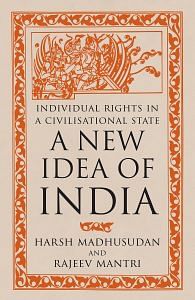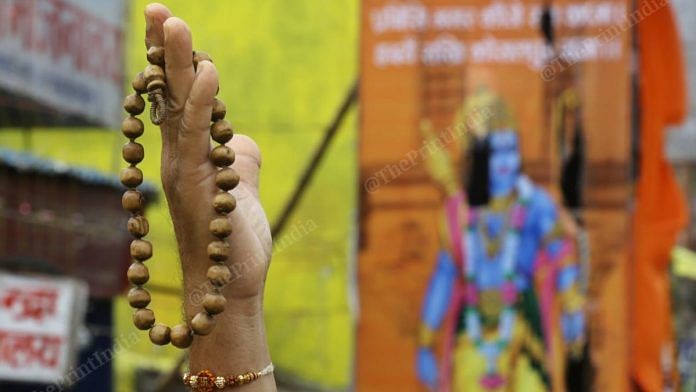Today, the fact that the Nehruvians are hard pressed to even acknowledge the civilisational unity that seemed obvious to Nehru himself shows how far they have travelled from their roots. In the quest to brand themselves ‘secular’, and guided by narrow electoral interests, they have transformed into deniers of India’s heritage. As the writer and MP Swapan Dasgupta noted in his book Awakening Bharat Mata:
Till the lifetime of Indira Gandhi at least, the Congress— despite many secular adjustments—broadly represented the mainstream of Indian nationalism. However, as it progressively vacated the old ground and simultaneously lost its overwhelming political dominance, traditional Indian nationalism increasingly came to be identified with forces that had hitherto been on the fringes. The slow transition of Vande Mataram and Bharat Mata from being a mainstay of the Congress to being identified with the BJP epitomised the shift.
The fundamental flaw of modern India’s secularism as practiced today is that it embodies a confusion between the State and the Society. Nowhere is this confusion more evident than in the way secularism and communalism are routinely hailed as antonyms. The opposite of secularism is not communalism but theocracy, for secularism is a feature of the State; nation-states can be secular or theocratic. Communalism is a feature of all societies. In a free, democratic and liberal country, when people who share the same ideas build coalitions and alliances, it is not only acceptable but sometimes even welcome. It is precisely through the creation of non-birth based, idea-driven networks and communities that ideational synthesis happens and social mobility accelerates.
While it is true that the State and society cannot be entirely divorced, the State has to be seen as a separate conceptual entity. For example, having an effective judiciary (or more generally, robust state capacity) means that social capital accumulation and business intercourse are more likely to happen across barriers of identity simply because contracts are likely to be respected, and hence people need not rely on social censure as a deterrence.
More broadly, this confusion between the State and society rears its head when India is spoken of as a ‘Hindu nation’. Whenever any politician, intellectual or public figure says so, there is much outrage and heartburn among a section of the intelligentsia, who wail that secularism is in danger. But these people fail to distinguish between nation and State. Because of India’s civilisational ethos, demography and history, India is already largely a Dharmic nation and society. But it follows from the scepticism innate to India’s philosophical tradition that the concept of a theocratic Hindu State is illogical. As the deputy prime minister of India at the time, Lal Krishna Advani, said, ‘India is a Hindu rashtra, but can never become a theocratic state … a Hindu rashtra and a secular state are virtually synonymous’.
Also read: Mourn idea of India, but don’t forget that the idea of people is changing too
Contradictions of an Indian renaissance
But the intelligentsia’s fears are not entirely unfounded. One section of the Hindu nationalist spectrum is straying from the tradition that espouses scepticism and openness under the garb of protecting Nehru’s ‘land of Bharat’ from foreigners. In a delicious irony, while purportedly protecting the land from alien faiths, the self-anointed protectors have come under the influence of foreigners in their interpretation and practice of the Hindu tradition, aping the antediluvian diktats—which disregard scepticism and deny openness— of the same traditions from which they aim to defend Hinduism. As the philosopher Friedrich Nietzsche observed, those who fight with monsters should be careful lest they become monsters.
How else does one explain a so-called Hindu faction, however fringe, which beats up defenceless young couples, yet subscribes to the same broad Hindu tradition that worships Krishna, famed for his relationship with Radha, with whom he was never married? How does one reconcile a self-styled Hindu faction which attacks women for drinking alcohol, when Hindu festivals are celebrated by men and women alike with the consumption of a drink made from the cannabis plant, and when the potent datura is offered in prayer to Shiva? These groups seem to have internalised the anti-blasphemy attitudes of medieval Turks and the prudery of Victorian England.
Marred by such confusions from all sides, the Indian State has not been in consonance with Indian society’s highest metaphysical impulses.
Also read: Nehru’s noble intent of treating Muslims fairly put India on slippery slope of faux secularism
The pitfalls of Nehruvianism
This Nehruvian worldview, which again is not necessarily the view of the flesh-and-bone Nehru himself, saw India primarily as an accident of history and a collection of communities. It did not see Indians as individual citizens.
Not everything about Nehruvian policies was incorrect, of course. Caste and tribal quotas as an affirmative action programme were not problematic for this framework given the long history of marginalisation and discrimination against Dalits and some tribal communities. Such quotas are based on birth and as long as one agrees conceptually that they should have a sunset clause, they are legitimate. The expansion of quotas for other backward classes (OBCs) is more contentious, but again, the above logic holds, though in a diluted form.
However, religion unlike caste can be changed and hence cannot be deemed to be a criteria for affirmative action in a secular State. It should be noted that many Muslims and Christians are already included in the OBC and ST reservation categories—they access reservation benefits based not on religion, but on other socio-economic criteria. Moreover, the ostensibly disadvantaged minority religions are often aggressively proselytising whereas Hinduism—or other Dharmic systems such as Buddhism, Jainism and Sikhism— are not. Also, speech policing by the State when it comes to the hurting of religious feelings means that non-proselytising religions have a further disadvantage. Hence, any such policy can in effect be an indirect incentive for conversion, especially with two minority Indian religious groups being the largest two religions globally.
Despite the carving out of Pakistan (and what is now Bangladesh) in the name of political Islam, and the secessionist insurgency seen in Kashmir due to similar motivations, so-called secular India did not adopt common personal laws. This happened even though Nehru changed, and rightly so, the Hindu personal laws by passing the Hindu code bills in 1955–1956. While the Hindu laws were made progressive, Muslim laws were left untouched.
Also read: Indian secularism still has a future if followers stop blame game with RSS: Rajmohan Gandhi
The right thing would have been to have the same laws from the beginning as is the case in America or Australia, but even today something as classically liberal as this issue is painted as bigoted by many political parties as well as sections of the Indian intelligentsia. Just to take one example, an Indian Muslim man can have four wives, while a Hindu man cannot (and no woman can have multiple husbands.) Whether this provision is used frequently or not is hardly the point; soft or symbolic secessionism within the Indian republic through a diluted Sharia remains the norm.
Hence, Nehruvian secularism is like the erstwhile Ottoman system where different communities had their own laws and ghettos, even though the Ottoman State was explicitly Islamic. But when it comes to economic redistribution and the welfare state, the ghettos disappear for the Nehruvian worldview and we all become Indians once again, rather conveniently.
Similarly, there were and are no neutral regulations with respect to places of worship and educational institutions. Rich temples and privately funded Hindu institutions—with some exceptions for the latter run by linguistic minorities— have come to be regulated and often effectively controlled by the government, while many minority ones are exempt from various quotas and laws even while they receive subsidies from the government. Why? Because equality would be communalism—a lovely ‘ism’ with a neutral meaning in the rest of the world but with connotations of ‘bigotry’ in India.
Such allegations of bigotry hold little water today as political discourse coarsens and people develop thicker skins. Political propaganda cannot camouflage the reality any longer. Those who complain selectively about fake news, social media and WhatsApp forwards are more often than not complaining about the loss of their monopoly in setting the narrative as they can no longer decide what should be discussed.
 This excerpt from A New Idea of India by Harsh Madhusudan and Rajeev Mantri has been published with permission from Westland.
This excerpt from A New Idea of India by Harsh Madhusudan and Rajeev Mantri has been published with permission from Westland.




“minority religions are often aggressively proselytising whereas Hinduism—or other Dharmic systems such as Buddhism, Jainism and Sikhism— are not.”
A bold lie. Ghar wapsi is on in many states. And even more than that, the pushing of Hindu dieties onto regional and tribal peopes is a long Dharmic tradition.
Authors are cheap Hindutvavadi’s.
H spam
I have read that book. I also found Shekhar Gupta ji’s comments too. Great book. I think the centre right wing narrative of the book is harmless to all and if anything will put us on path of high growth and self confidence in ourselves while dealing with our problems. The most important part of this book is it fundamentally demolishes the entire nehruvian narrative around economics (confused socialist cronyism) and secularism (the horribly perverted secularism which is subtly and sometimes overtly anti hindu). Great book. Keep writing more.